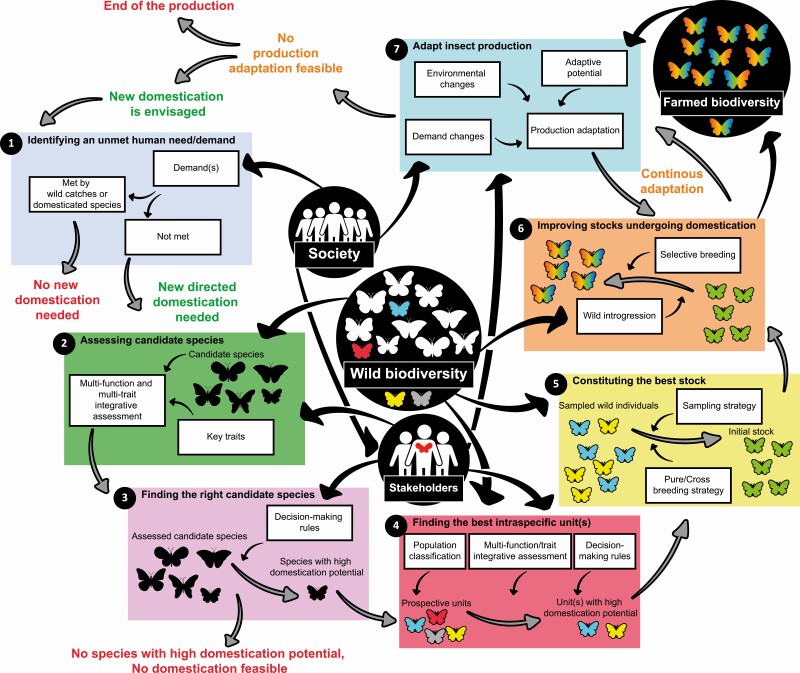Figure 1.
A seven-step workflow to develop a fruitful insect production. 1. Identification of an unmet human demand. 2. Identifying candidate species that could meet the demand through a multifunction and multitrait assessment jointly developed with stakeholders. 3. Decision-making rules established with stakeholders highlight species with high domestication potential (here, one species but several species can be chosen). 4. Investigating the interest of geographic differentiation between wild populations (prospective units) of the species, similar to steps 2 and 3 to highlight units with high domestication potential (two units in this fictive example). 5. Creating the initial stock through pure or cross breeding strategy with attention paid to the genetic diversity of this stock (here, a cross breeding strategy is used). 6. Initial stock improvement through selective breeding programs and/or wild introgression to minimize adverse effects and reinforce beneficial domestication effects. 7. Production evolution according to human demand and environmental changes thanks to its adaptive potential and methods developed in the previous step. When no adaptation can be developed, new domestication could be considered. Wild biodiversity is considered at the species and intraspecific levels.

